
Understanding Modern Light Bulbs
Since the dawn of the humanity, people tried to create light to chase away the dark. In that endeavour, we have certainly come a long way. Evidences of the first lamps used by early humans go back to 70.000BC. They were, however, of simple structure – just a shell or a mere hollow rock, which held pieces of moss soaked in animal fat that would burn with fire.
Then came along one of the greatest inventions of human history – electricity and electrical lamp. In 1801 Sir Humphrey Davy invented the first electric carbon arc lamp by connecting two wires to a battery and attaching a charcoal strip to the other end of the wires making charge carbon glow. Again primitive, it needed perfecting and during the 1870s, both Thomas Edison and Sir Joseph Swann invented the electric incandescent lamp. It worked when an electric current was passed through a filament, which heated and produced light. These lamps lasted a short lifespan by modern standards and were inefficient and fragile, but were a giant leap forward and a good base for what came thereafter.
The electric bulb was then improved in 1920 when a carbon filament that was used until then is replaced with tungsten and a space inside a bulb is filled with a gas, which reduced evaporation of tungsten and with that prolongs the life of a lamp. Advancement in technology of electrical lamps is ongoing, and today, we produce many kinds of lamps with various materials, power sources, colour of lights and for different uses.
In this article we discuss a couple major lamp types used in our modern-day home as well as a few other good-to-know factors. Whether it be purely for lighting up your place of comfort, or for decorative purposes. The possibilities are nearly endless.
Fluorescent and Compact fluorescent lamps (CFL)
Friedrich Meyer, Hans Spanner, and Edmund Germer patented a fluorescent lamp in 1927. One difference between mercury vapour and fluorescent lamps is that fluorescent bulbs are coated on the inside to increase efficiency. At first, beryllium was used as a coating, however, beryllium was too toxic and was replaced with safer fluorescent chemicals.

How Fluorescent Lighting Works
Fluorescent lights are mercury-vapour gas-discharge lamps. An electric current excites the gas inside the bulb or tube and generates UV radiation. The bulb is coated with a phosphor, and when the UV radiation strikes this phosphor, it’s converted into visible light.
Unlike incandescent bulbs (including halogen bulbs), fluorescent bulbs do not use a filament to cause electrical resistance. So if the electrical current weren’t regulated in a fluorescent light, it could shatter the bulb. This is why fluorescent lights always require a ballast – the ballast provides a starting charge for the light and then regulates the ongoing current. A proper ballast can help to improve the quality of light and the life of the bulb. Different bulbs call for different types of ballasts.
How Compact Fluorescent Lighting Works
Edison’s most famous, improved invention as the icon of ideation. It’s known as the compact fluorescent light bulb, or CFL, and its illumination comes by way of a much different mechanism. Instead of a glowing filament, CFLs contain argon and mercury vapour housed within a spiral-shaped tube. They also have an integrated ballast, which produces an electric current to pass through the vaporous mixture, exciting the gas molecules. In older CFLs, it took several seconds for the ballast to produce enough electricity to ramp up the excitation.
Newer CFLs have more efficient ballasts and require a shorter warm-up. Either way, when the gas gets excited, it produces ultraviolet light. The ultraviolet light, in turn, stimulates a fluorescent coating painted on the inside of the tube. As this coating absorbs energy, it emits visible light. Believe it or not, CFLs are the descendants of the Lightsaber-shaped fluorescent bulbs that still flicker in garages and workshops all over the world. But these are not your father’s fluorescents. Despite their heritage and their similarities to incandescent bulbs, they both require electricity, they have a glass cover and they have a threaded base. CFLs emerged as the biggest thing in interior illumination since the candle.
CFLs have a reputation for not reaching their maximum illumination instantly. Happily, most new bulbs turn on almost instantly. Still, some bulbs are more sluggish than others. Very few CFLs can be used in dimmable fixtures; placing CFLs not designed for dimming into a dimming fixture creates a fire hazard. Having said that, dimmable CFLs, as well as 3-way CFL bulbs, are available. CFLs use significantly less energy, 75% less energy than incandescent light bulbs. That means CFLs require less wattage to produce an equivalent amount of light. For example, you could use a 20-watt CFL and enjoy the same amount of light as a 75-watt incandescent. In some tests, they burned brightly for 10,000 hours, whereas standard bulbs burned for only 800 to 1,500 hours
Several manufacturers make compact fluorescent light bulbs that can be used with dimmer switches and in three-way lamps. Many CFL bulbs can be used outdoors as long as the fixture is enclosed. All and all, they give off a good light. Compact fluorescent light bulbs deliver their best results when left on for 15 minutes or longer. Switching CLFs on and off will shorten their life span and may decrease their efficiency, mainly because the excitation of the gasses and of the fluorescent coating take some exposure to an electric current to reach an optimal level. CLFs are also inefficient in enclosed, recessed fixtures (too hot).
Incandescent lamps:
In 1802, Sir Humphry Davy showed that electricity running through thin strips of metal could heat them to temperatures high enough that they would give off light; this is the basic principle by which all incandescent lamps work – by heating a thin tungsten wire to temperatures of around 2700°C. The hot wire emits what is known as black body radiation, a very broad spectrum of light that provides a warm look and a faithful rendering of colour.
The advantage of the incandescent lamp is that it can be powered directly from the supply without the need for converters and controls. The basic design has remained the same over 100 years – a resistive filament enclosed in an evacuated bulb. The light is powered directly form the supply, and current flowing through the filament causes it to heat up to an incandescent state.
Incandescent lamps are often considered the least energy efficient type of light commonly found in residential buildings. Although inefficient, incandescent lamps possess a number of key advantages. They are inexpensive to buy, turn on instantly, are available in a huge array of sizes and shapes and provide a pleasant, warm light with excellent colour rendition.
However, because of their relative inefficiency and shorter life spans, they are more expensive to operate than newer lighting types such as compact fluorescent lamps (CFLs) and light-emitting diodes (LEDs). The typical incandescent lamp lasts about 1000 hours. Incandescent lamps last about a year while CFLs can last 10 years and LEDs up to 25 years.
Types of Incandescent lamps:
There are three commonly known types of incandescent lamps (called A-line lamps) used in residential applications:
– Standard incandescent or pear-shaped A-19 lamps.
– Energy-saving or halogen A-19 lamps.
– Reflector or parabolic reflector (PAR) lamps, sometimes called “flood” or “spot” lamps.
Standard incandescent A-Line Lamps:
Commonly known as the screw-in “A”-type lamp that use a medium Edison (E-26 in US or E27 in UK) base, standard incandescent bulbs are the least efficient light source commonly found in homes. These lamps produce visible light by heating a tiny coil or filament of tungsten wire that glows when it is heated by an electrical current.
Advantages of
Incandescent lamps:
– Incandescent lamps present a resistive load with a very small reactive component, and therefore operate at high power factors and without harmonics.
– The lamp output (dimming) may be controlled by varying the voltage or power supplied to the lamp. This allows direct control without additional wiring.
– Incandescent lamps have an output spectrum approaching that of natural light, and are more compatible from a human point of view.
Incandescent lamps are commonly used in desk lamps, table lamps, hallway lighting, closets, accent lighting, and chandeliers. They provide good colour rendering and, in fact, serve as the colour standard by which all other lamps are measured. Incandescent lamps are also easily dimmable.
Carbon Filament Lamps
Carbon filament lamps, also known as “Edison Bulbs” or “Antique Filament Bulbs” are ushering in a fashionable new era in home and commercial lighting designs. Whether in trendy hangouts, tapping into the popular Victorian industrial look, or elegant rooms seeking to enhance the ambience, these lamps have become a staple for restaurant and retail designers – as well as discerning home owners – looking to utilise its warm touch.
These lamps are bringing chic and vintage style back to lighting. Since the 1980s, these statement bulbs have experienced a regular upcoming in popularity every few years thanks to their industrial charm, warm and relaxing ambience. Today, Carbon Filament lamps come in a variety of shapes, sizes and variety of filament designs.
Unlike standard light bulbs, which have a tightly coiled filament, Edison bulbs feature a looser, visible filament that comes in a variety of styles, which include:
– Squirrel cage:
The filament is threaded vertically up and down to resemble the bars of a squirrel cage.
– Spiral:
These bulbs feature a tightly coiled spiral filament.
– Hairpin:
These filaments are shaped like a hair pin (also known as a bobby pin).
– Loop:
Commonly refers to a filament with three or four vertical loops.
– Christmas tree:
These bulbs are named for the zig-zag shape of their filament, which resembles the shape of a Christmas tree, and more.
The exposed filament in carbon filament bulbs evokes feelings of nostalgia and adds a touch of warmth and industrial or antique-chic to any space, including homes. The light provided by these bulbs is understated and warm, which makes them ideal for creating a welcoming and cosy ambience.
In addition to their warmth, carbon filament bulbs feature vintage-inspired bulb shapes designed to recreate the hand-blown glass appearance of Edison’s original bulbs.

Metal shades, wire guards, and other strong lighting fixtures can complement the exposed filament and unique bulb shape, but many lighting designers, businesses, and homeowners prefer to leave their carbon filament bulbs exposed to create a vintage, industrial look and feel.
Because 90% of their output generates heat instead of light, carbon filament bulbs are less energy efficient than CFL or LED bulbs. As a result, they can be more expensive in terms of both upfront purchasing costs as well as power usage.
Today’s Edison bulbs are historic replicas or reproductions of bulbs developed by Thomas Edison. They produce fewer lumens (less light) per watt than modern incandescent bulbs and have an extremely warm or yellow colour temperature, which may be why they feel so inviting. Most of today’s Edison bulbs use a tungsten filament to replicate the original carbon filament glow, though some of the bulbs still have the more expensive carbon filament. Expect to pay more for true carbon filaments though.
LED Lamps
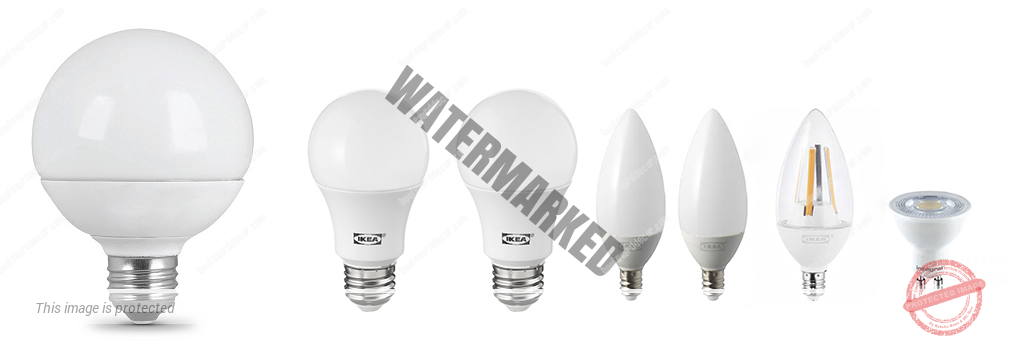
How do LEDs work?
LED stands for light emitting diode. LED lighting products produce light approximately 90% more efficiently than incandescent light bulbs. An electrical current passes through a microchip, which illuminates the tiny light sources we call LEDs and the result is visible light. To prevent performance issues, the heat LEDs produce is absorbed into a heat sink.
Lifespan of a LED Lamp:
The useful life of LED lighting products is defined differently than that of other light sources, such as incandescent or compact fluorescent lighting (CFL). LEDs typically do not “burn out” or fail. Instead, they experience ‘lumen depreciation’, wherein the brightness of the LED dims slowly over time. Unlike incandescent bulbs, LED “lifetime” is established on a prediction of when the light output decreases by 30 percent.
LEDs are notable for being extremely long-lasting products. Many LEDs have a rated life of up to 50,000 hours. This is approximately 50 times longer than a typical incandescent, 20-25 times longer than a typical halogen, and 8-10 times longer than a typical CFL. Used 12 hours a day, a 50,000 bulb will last more than 11 years. Used 8 hours a day, it will last 17 years!
The Technical Details:
LED lights are composed of two types of semiconducting material (a p-type and an n-type). Both the p-type and n-type materials, also called extringent materials, have been doped (dipped into a substance called a “doping agent”) so as to slightly alter their electrical properties from their pure, unaltered, or “intrinsic” form (i-type).
The p-type and n-type materials are created by introducing the original material to atoms of another element. These new atoms replace some of the previously existing atoms and in so doing, alter the physical and chemical structure. The p-type materials are created using elements (such as boron) that have less valence electrons than the intrinsic material (oftentimes silicon). The n-type materials are created using elements (such as phosphorus) that have more valence electrons than the intrinsic material (oftentimes silicon). The nett effect is the creation of a p-n junction with interesting and useful properties for electronic applications. What those properties are exactly, depends mostly on the external voltage applied to the circuit (if any) and the direction of current (i.e. which side, the p-type or the n-type, is connected to the positive terminal and which is connected to the negative terminal).
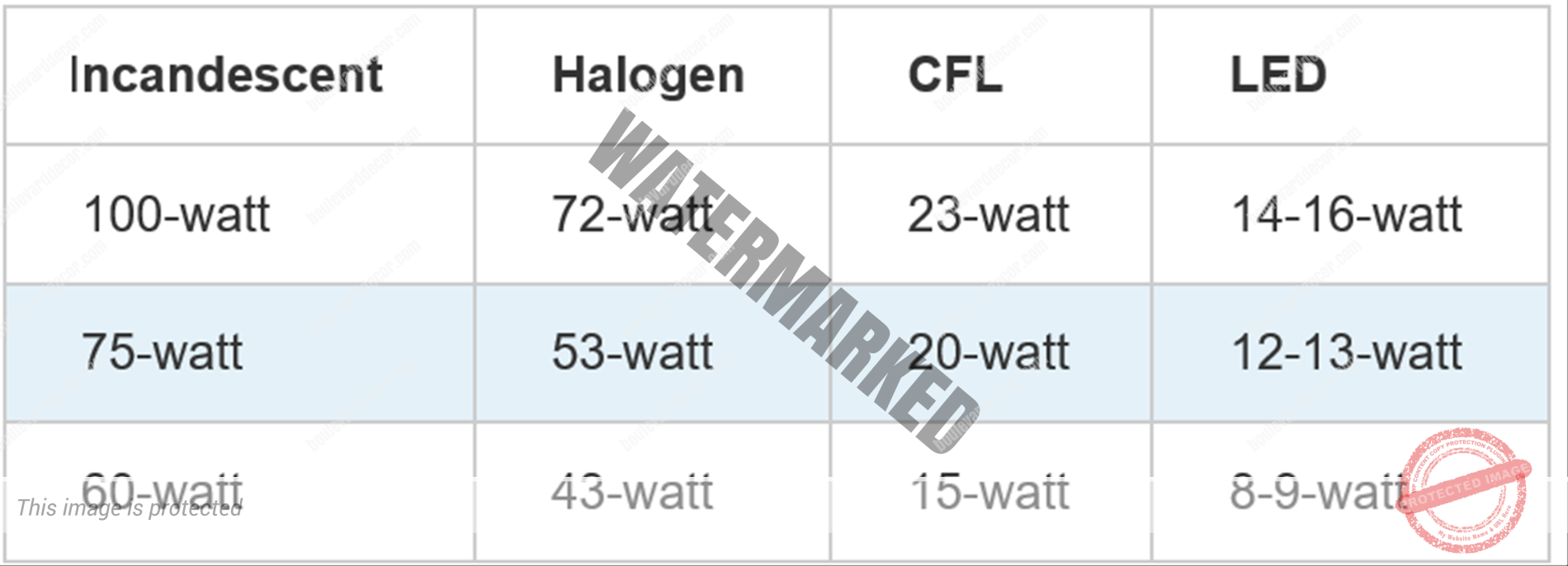
Advantages of LED Lamps
The advantages of switching to LED are numerous.
– LEDs use much less electricity than other bulbs.
– They have extremely long rated lives.
– They produce very little heat.
– They do not emit UV or Infrared.
– They contain no mercury.
– They are resistant to shock and vibration.
– They can operate effectively in extremely cold environments.
Enclosed fixtures are defined as not only air tight, but also are fixtures that are enclosed on the side, rear and open in the front, such as many track heads. LEDs that are used in fixtures where there’s less than 12.5mm around the circumference of the lamp when installed in the fixture are also considered an enclosed application. If you plan to use LEDs in these types of applications you should use an LED that’s rated for enclosed fixtures. Using an LED lamp not rated for enclosed fixtures in this type of application may cause the LED lamp to flicker and will dramatically reduce the life of the lamp.
General Cost of LED Lamps
LED is new technology, and the expense of producing quality product is still high. However, pricing has come down dramatically from just a few years ago and prices are expected to continue to drop. The energy savings realized in a switch to LED means that the extra up-front cost is often paid back rather quickly, and you’ll wind up saving money over the life of the bulb.
Environmentally friendly?
LEDs are very green. For starters, they use much less electricity than many other lighting products. This means that less electricity has to be produced to operate them, and resulting in lower emissions from power plants, especially in areas where coal-fired plants are common. Unlike CFLs, they contain no mercury. Because of their long life, they also reduce solid waste: If you replace an incandescent bulb with an LED, you will prevent fifty 1,000 hour incandescent bulbs from being thrown away. Additionally, they produce very little heat and can reduce energy usage related to HVAC.
The Important need-to-know Facts:
Colour Rendering Index (CRI)
CRI is a comparison of a light source’s ability to accurately render the colour of an object to that of a standard reference light source. The CRI scale is from 0 to 100, with a value of 100 indicating excellent colour rendering. Sunlight and most incandescent lamps have CRI values of 100. Only compare the CRI values of light sources of roughly the same colour temperature.
Colour Temperature
Colour temperature is a way to compare the colour of light from different types of lamps. It is often referenced as cool (slightly blue) or warm light (slightly orange). Incandescent lamps and candles give off warm colour temperatures, while sunlight and some fluorescent lamps emit cool colour temperatures.
Efficacy is a measure of light output (lumens) per Watt of electrical power needed by the lamp. Lumens measure how much light is emitted. Watts indicate how much electrical power is consumed.
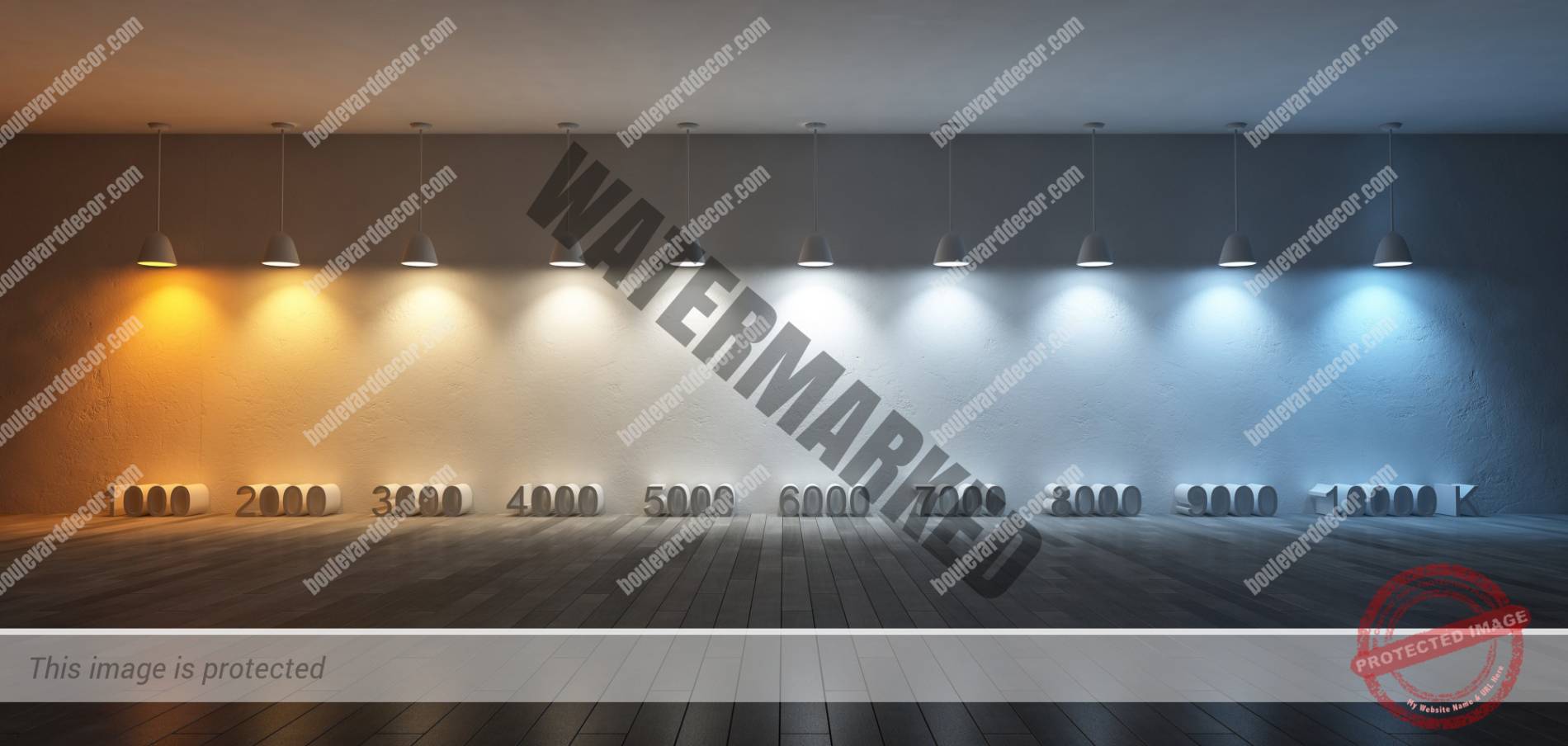
If you go to a specialist lamp retailer, you’ll find you can buy lamps in different “colour temperatures,” sometimes (depending on the manufacturer) indicated by a four-digit code on the box. So, for example, you can buy a lamp with a colour temperature of 2000 (extra warm white—quite a reddish, cosy light, good for ambient light in a home, bar, or hotel), 3000 (warm white—a yellower light), 4000 (ordinary white—a general-purpose white light, more suitable for reading at home), or 6000 (cool white, perhaps more suitable for an office). Changing the colour temperature of your lamps will make a big difference to the ambience of your room.
Cool White (6500K, 6000K, 5000K) looks more “blue” and “green” to your eye.
Warm White (4000K, 3000K, 2700K, 2000K) looks more “yellow” and “orange” to your eye.
IP Ratings Explained
The IP in the code is short for Ingress Protection – as in how well protected a fitting is.
When shopping for outdoor or bathroom lighting, you will most probably have been confronted by a mysterious IP code that is followed by two numbers. This code was designed to provide us non-experts with an easy to understand description of how well-protected a light fitting is.
Ingress protection determines if an electrical product’s exterior case or enclosure will protect the working parts from water, dust or solid object intrusion, keeping the product electrically safe and lasting longer. Ingress protection testing, or IP testing, provides a repeatable test standard to compare the enclosure protection; IP testing should always be performed at an accredited test laboratory.
Each part of the code is designed to give you information and help you decide if the fitting you are looking at is suitable for where you want to put it.
Lamp Holders explained
Historically, bayonet was used in the UK for domestic lighting and the Edison screw in Europe and the Americas. Each cap type has advantages, for example bayonet cap light bulbs do not work loose with vibration. But for domestic use, neither type has a significant technical advantage.
Most light sources (Filament, CFL, LED etc.) will have versions in bayonet and screw. But: because standard screw or E27 is the most common, this fitting will give you the greatest range of light bulb options. As a matter of convenience it may make sense to, say, have all hall and landing ceiling pendants with the same fitting to avoid bulb compatibility issues.
For wall and ceiling lights with a fixed lamp holder, it’s important that the lamp holder is compatible with the type of bulb you want to use. For pendant lights it’s important that the lamp holder is both compatible with the type of bulb you want to use and your preferred lamp shade.
There are two main types of light bulb cap: Edison screw (ES) and bayonet (BC).
The most common sizes are:
– E27 or ES or ‘standard screw‘, where the diameter of the light bulb cap is 27mm
– E14 or SES or ‘small Edison screw‘, where the diameter of light bulb cap is 14mm
– B22 or Ba22d or BC or ‘bayonet cap‘, where the diameter of the light bulb cap is 22mm
– B15 or Ba15d or SBC or ‘small bayonet cap‘, where the diameter of the light bulb cap is 15mm
Cord Grip, hooked or threaded lamp holder?
– Cord grip, where the lamp holder includes a cord grip to secure the supply cord and is suspended as a pendant light. Common types include a compression fitting, looping the cable round an internal obstacle, or a screw which presses against the cable
– Threaded, where the lamp holder has a threaded component which is used to mount it on a support. Common in table/standard lights where the lamp holder is fixed to the base/stem of the lamp, and also used in conduit applications. These used to be called ‘nipple’ lamp holders. The threaded parts come in a range of metric and imperial sizes.
– Hooked, where the lamp holder has a hook for suspending using chain, rope or hooking over a fixture. Hooked lamp holders should still have a cord grip – the chain secures the lamp holder, but there needs to be a device for stopping the supply cable being pulled out.
Brass, silver, bronze, Bakelite, or Ceramic?
The material and finish options include:
– Metal, usually machined from brass and available with a choice of finishes including aged brass or silver nickel plate.
– Ceramic, moulded from clay, which is then glazed and fired. An off-white glaze is the most common, but other colours are available.
– Plastic, which is low-cost and widely available. In addition to the modern white plastic, there are more traditional Bakelite lamp holders.
The choice of materials, colour and finish is primarily an aesthetic judgement – how you want the lamp holder to look. But, generally, metal and ceramic lamp holders can run hotter than plastic.
Lamp shapes, sizes and base types explained
When thinking about the image of a typical bulb, most of the people picture that one sort of bulb many of us have been using all our childhood. It’s the traditional A-type bulb. However, bulbs have been evolved significantly and now you have them in numerous categories divided by shapes, sizes and base types.
Of course, such variety of shapes and sizes can be not only overwhelming but even confusing, yet, the principles of how light bulbs are divided are, in fact, very logical and you will get the whole picture once you learn about all the possible types. The respective parameters (shape, size and base type) appear on the package of the product. This normally is in the form of letters followed by a number followed by an optional letter. The first letter or letters indicate the shape. While the numbers indicate the diameter but the optional letter indicates the length of the bulb.
Modern light bulbs can be used in a variety of fixtures, and each fixture has its own particular requirements of size and shape of the bulb that it is compatible with.
The main shape designations of light bulbs are:
– A – Standard household incandescent light bulb shape (widely used for home lighting, universal)
– B – Bullet tip
– BT – Bulged or Blown Tubular bulb shape (used for table lamps)
– BR – Short reflector style light bulb
– C – Candle or Conical bulb shape (used for chandeliers and decorative lamps)
– CP – Crystalline Pear bulb shape
– E – Ellipsoidal bulb shape
– ER – Extended reflector light bulb shape
– F – Flame style candelabra bulb shape
– G – Globe bulb or circular bulb
– HK – Hexagonal Candle
– K – Krypton or narrow reflector light bulb shape
– MB – Halogen bulb
– MR – Quartz reflector lamp (low wattage)
– P – Pear bulb shape
– PAR – Parabolic Aluminized Reflector (PAR) lamp
– PS – Elongated standard incandescent bulb
– R – Reflector light bulb style
– S – Straight Sided bulb style
– T – Tube lamp shape
A-shaped bulbs.
“A” type bulb shapes are standard type for household lighting but you will see different variations and types of them. However the standard bulb sizes are A60. The letter indicates the shape of the bulb but the number following it is the diameter of the bulb in eighths of an inch. For instance, A-60 bulb means that it is s “A” type and the diameter would be 60mm. For non-imperial measured bulbs, the number after the bulb shape is the number of centimetres at the widest point of the bulb, ie. A6 = 6cm across.
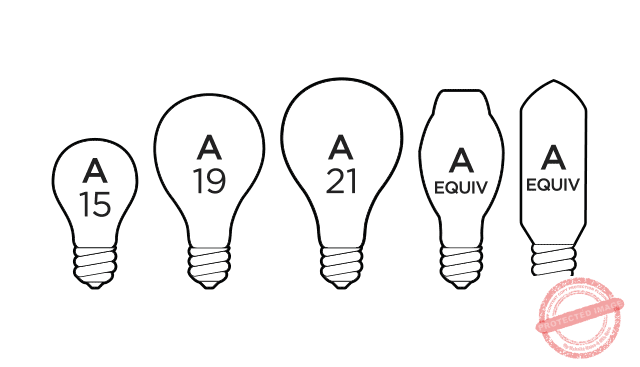
B and C-shaped bulbs.
B-shaped bulbs are also known as Candelabra bulbs. Bulbs with this shape have a bulged base that attenuates to a rounded tip. C-shaped bulbs look very similar to holiday lamps. The bulbs of this shape are very wide-spread in chandeliers, night lights and lower wattage applications.
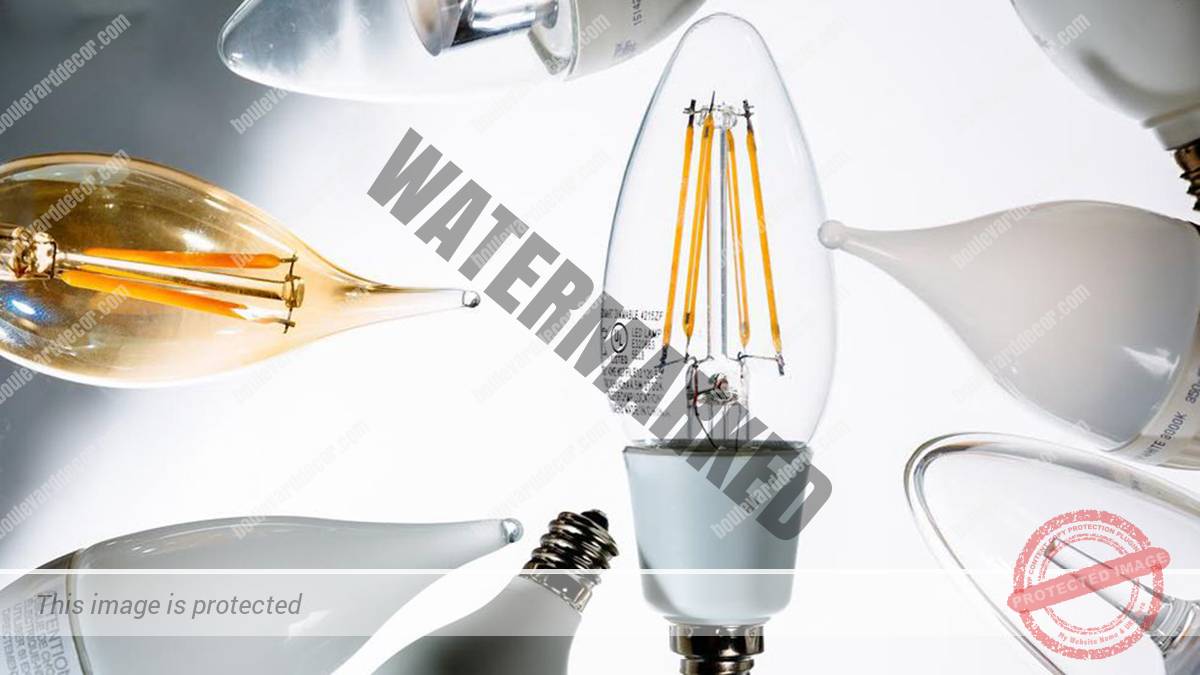
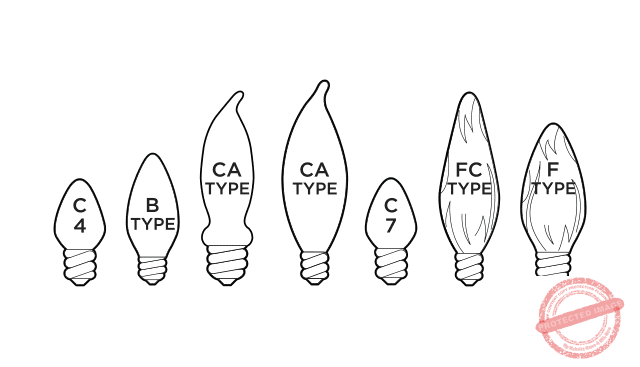
PAR-shaped bulbs.
PAR light bulbs use a parabolic mirror that focuses all the light. For LEDs the PAR designation is used for defining the shape since most of the LEDs lack any have a reflective lower surface. The most common of PAR lamps are PAR20, PAR30, PAR38 and PAR42 type of bulbs; nevertheless, those are just a few of the types available. These bulbs come in various beam angles and they are widely used in spotlights and flood lights.

Bulb base types
Altogether you can divide all the bulbs into 6 base types:
– Screw bases;
– Twist and lock bases;
– Specialty bases;
– Bi Pin bases;
– Fluorescent pin bases;
– Compact fluorescent lamp plug in bases.
However just two of these base types can be considered as the main ones, namely screw bases and pin bases. Each of the base types work differently as their main function is to connect the light bulb to the electrical voltage and the technology of how it is achieved is different in each case.
Screw bases
Screw bases are the most common light bulb base. You might also hear them referred to as Edison base light bulbs. In an incandescent or halogen screw base light bulb, two contact wires link the filament to the base where the electrical voltage is connected to the bulb. Screw bases are made in several sizes, and on the packaging you will see that they are referred to by a descriptive name and size. Unlike in the case of the light bulb shapes, the number in the light bulb base indicates the light bulb base diameter in millimetres for instance the candelabra E12 has a diameter of 12 millimetres. The most common screw base sizes are E5, E-5, E10, E-10, E11, E-11, E12, E-12, E14, E-14, E17, E-17, E26, E-26, E27, E-27, E39, E-39, E40 and E-40.
Pin bases
Pin bases are mainly used in linear fluorescents, plug-in compact fluorescent bulbs, MR16s, and a few types of HID light bulbs. The principle of pin base bulbs differs significantly from screw base lamps. Whereas the screw base connects the light bulb to the voltage with two contact wires connected to the metal base, pin base light bulbs contain two pins that stick out of the base and connect the bulb to the voltage. Electrical current then can pass through the pins and flow into the light bulb to excite the filament and produce light.
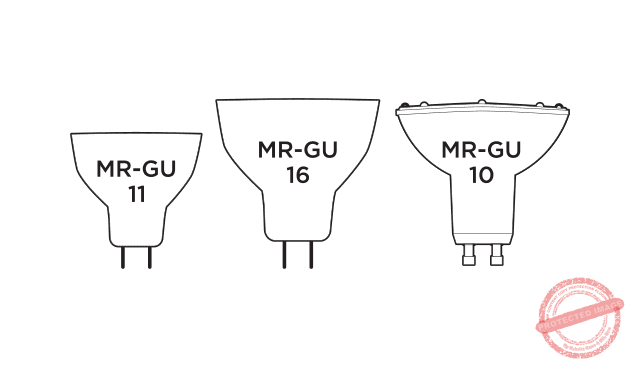 AUTHOR: Darius Du Plessis
AUTHOR: Darius Du Plessis



